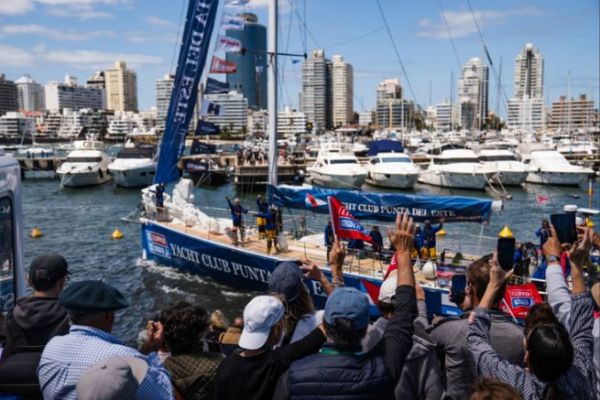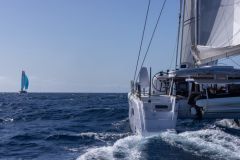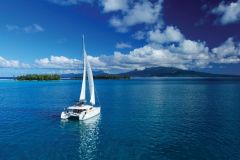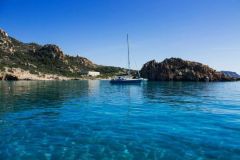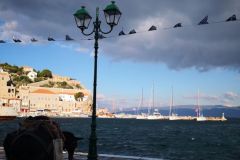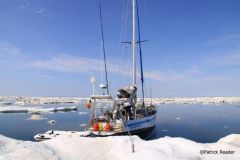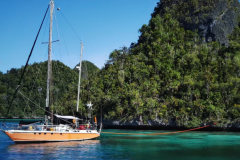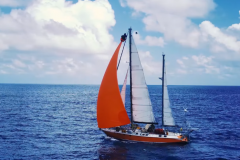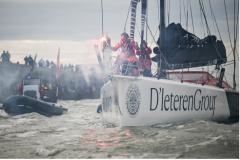The third act of the Clipper Race 2025 began on October 20, 2025. Ten yachts, led by mixed and mostly amateur crews, left Uruguay to tackle the 3,500 nautical miles separating them from the port of Cape Town. A demanding leg, where sailing under spinnaker promises to be as sporting as it is strategic.
The South Atlantic, an uncompromising playground
Barely out of Punta del Este's coastal waters, the crews enter an area renowned for its fast, powerful low-pressure systems. Heading south-east, they set their sights on the rear of the lows typical of this latitude, to take advantage of the downwind westerlies. The aim? Stay as long as possible in the wake of these air masses, to maximize speed and limit transitions.
But the maneuver is not without risk. These systems move fast. If you miss a front, you could find yourself stuck under high pressure, in the middle of a storm, while the others are making over 20 knots.
Spinnaker mandatory, or almost
The course configuration calls for a long slide under spinnaker, with heavy seas and winds well in excess of 30 knots. An exhilarating but technical course, where maneuvering errors can be costly, especially for recently trained crew members.
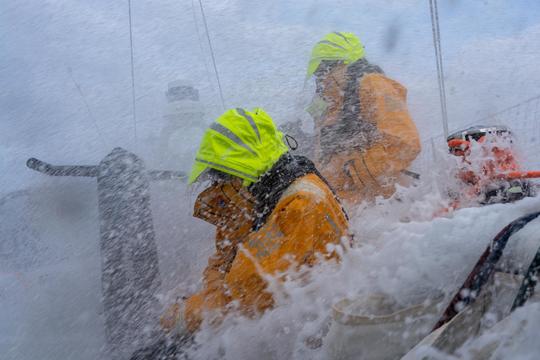
Those who have fine-tuned their manoeuvres during the first two legs should do well. For the others, the exercise resembles a long sprint in permanent imbalance, eyes riveted on the compass, the pilot and the sail settings.
Major tactical choice in the first 48 hours
Very quickly, the skippers had to make a decision. They had two options. Either plunge further south to pick up the established winds of the forties, at the cost of a detour that will lengthen the route. Or aim for a more direct route, following the rhumb line, with the risk of flirting with the calms at the center of the St. Helena high.
This is a classic dilemma in South Atlantic transatlantic racing, where the weather often plays the referee, sometimes throwing the rankings completely out of kilter on the final approach.
Arrival in Cape Town, a special moment
After a fortnight at sea, the crews will be back on dry land in a majestic setting. Seen from the open sea, the silhouette of Table Mountain is a promise of imminent arrival and reunion for the South Africans on board, like local skipper Dylan Kotze. "As you approach Cape Town, you can see the Table like a floating shadow. It's always impressive. It will be an emotional return for me" he explains.
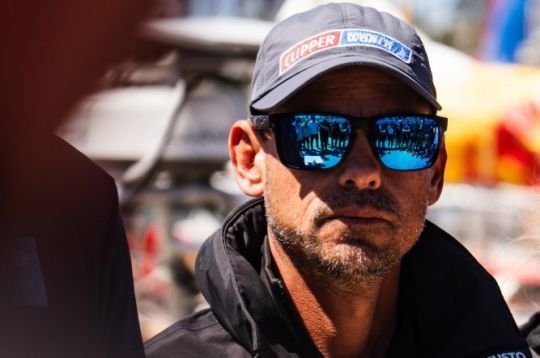
A stage that counts double
With the standings still tight after two stages, this crossing is strategic. It could reshuffle the cards in the overall standings, especially as up to six bonus points are at stake in intermediate sprints.
At the start in Punta del Este, GOSH led the way with 30 points, followed by Team Scotland (18 points) and London Business School (17 points). The fleet also included boats flying the colors of Qingdao, UNICEF and Yacht Club Punta del Este.
One race, a thousand stories
On board, the stories are multiplying. Like that of Marcus Dayton, a 46-year-old Captonian who set sail from Portsmouth on August 31, 2025, and is about to return home after more than 10,000 miles.
"We hit 25 knots under spinnaker. This time, I'd like to hit 30 he confided as he left South America. "It's not cruising. You fight with the boat, the sail, the course. But what a kick!"
The Clipper Race is an endurance regatta. But this leg to Cape Town is a life-size initiation to ocean sailing, at its rawest and most unforgettable. No comfort, no respite, but pure human adventure.
Standings at the start of stage 3 :
1 // GOSH // 30 points
2 // Scotland // 18 points
3 // London Business School // 17 points
4 // Power of Seattle Sports // 15 points
5 // Qingdao // 13 points
6 // Washington, DC // 12 points
7 // Tongyeong // 11 points
8 // Yacht Club Punta del Este // 8 points
9 // UNICEF // 5 points
10// Warrant // 3 points

 /
/ 